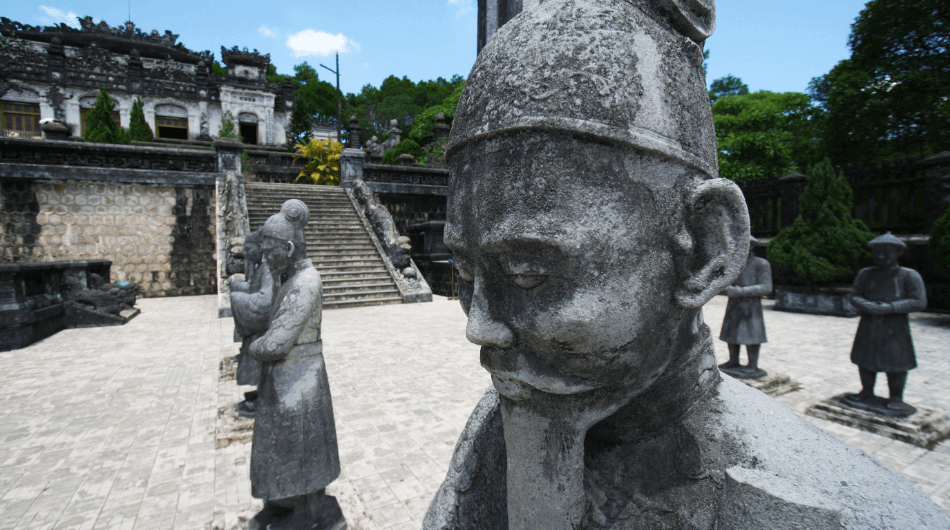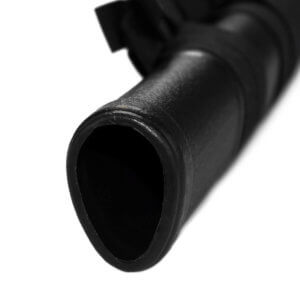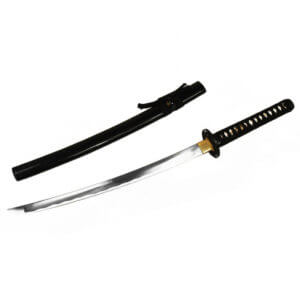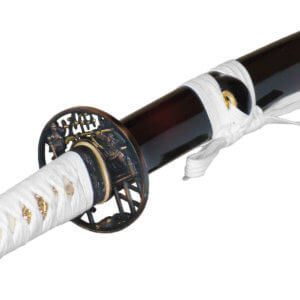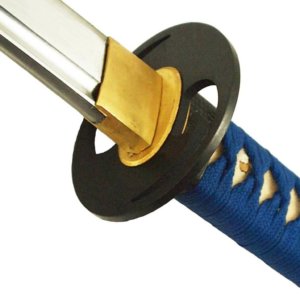Long swords, magnificent armour and a fighter's heart that is second to none - films such as "The Last Samurai" or the TV series "Shogun" from the 1980s have created a romanticised image of the samurai in Japan.
But were they really all brave and virtuous warriors? What did reality actually look like back then, what weapons did they have and what was the code of honour of these warriors?
The following lines embark on a search for traces that leads right up to the present day.
Who are the samurai? The servants with the sword
Literally, the term "samurai" can be translated as servant or protector, which describes their role in the weddings quite well.
The samurai were a group of elite fighters from the minor nobility who were responsible for the safety of their master.
Samurai specialise in close combat. Privileged in their choice of weapons, the troop had its heyday in the Middle Ages, has a code of honour and still plays an important role in Japanese society today.
Only there the term "samurai" is rather unusual - in their home country they are called "Bushi" called, which means fighter or warrior.
They emerged from the bodyguards of clan lords and large landowners and can now look back on a history of over 1000 years. They were practically born to be samurai, as their training began in early childhood and was completed by the age of 19 or 20.
If a warrior lost his position or his master died, they went travelling - were called ronin and also lost their social status and recognition.
What many people don't realise is that not only men were samurai. There were also female warriorssuch as the Samurai Nakana Takeo. Even if there were only a few of them, these female fighters should not be forgotten because of their courage, as women were forbidden to fight in the official troops.
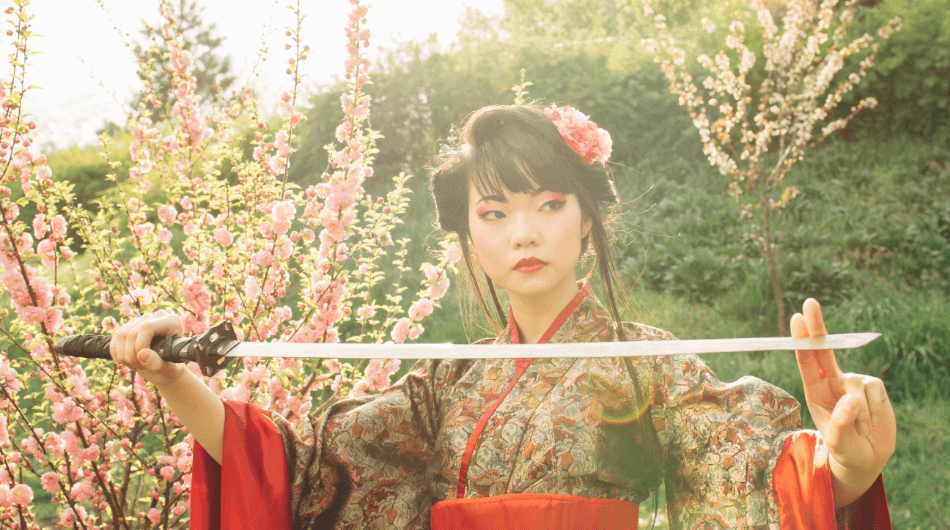
History and development: Samurai evolved from bodyguards
Exact dates about the development and history of the samurai can no longer be verified today.
However, the emergence of this group is clearly based on the abolition of compulsory military service in 792, which is why peasants volunteered for the army and fought for their emperor on the borders in order to subjugate lands.
Other farmers took over the abandoned farmland and landowners emerged.
However, the volunteer army was no longer able to provide security within the country, so large farmers and the nobility protected their property and families with their own bodyguards. Some families were so skilful that they also took on military missions for the imperial house - the sword nobility called Buke was born.
These bodyguards formed the basis of the samurai known throughout the world, although between the 8th and 12th centuries only the emperor's bodyguards were officially allowed to call themselves samurai.
The heyday of the group began in the 13th century with the introduction of shogunates.
A Shogun can be compared to a European duke. In Japan, he came from either the imperial family or one of the three noble families.
Over time, however, the samurai gained so much power that the heads of some families often took on the title of shogun themselves.
From 1477, the so-called "Sengoku period". A characteristic of this period is that the lower middle class rises up against the ruling class. In the previous period, the lavish lifestyle of ruling families had risen sharply.
The samurai, some of whom were both warriors and farmers, also suffered from the rising taxes. This led to various uprisings and wars over the next few years.
The time of the Tokugawa shogunate
On 21 October 1600, there is a decisive battle between Tokugawa Ieyasu's and Hideyoshi's groups. One of the most famous samurai, namely Miyamoto Musashifought on the side of Hideyoshi in this battle.
Hideyoshi's troops were defeated and this victory led to far-reaching reforms in the country. The population was strictly controlled and monitored. The entire country became more and more isolated and sealed off from the outside world.
In 1867, Japan opened up and the Tokugawa shogunate came to an end.
With this step, the traditional samurai also lost their status and slowly disappeared from Japanese life.
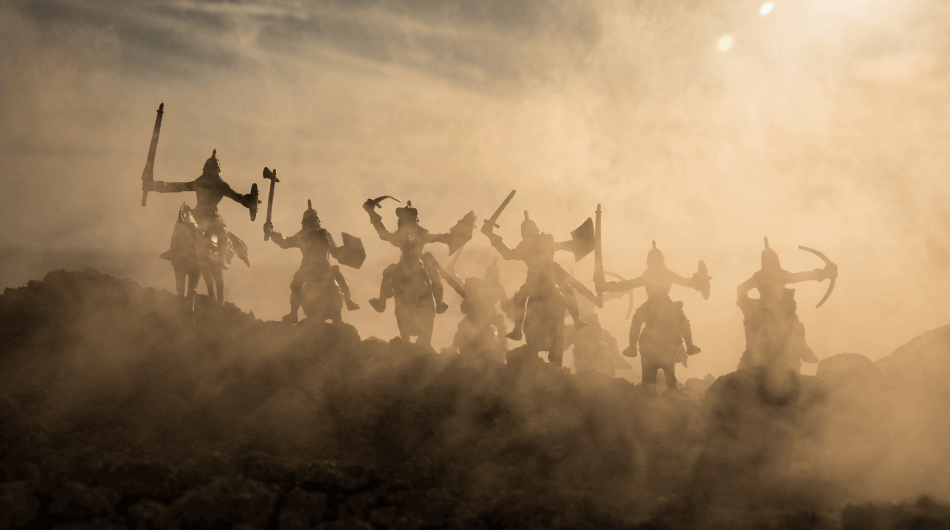
Heroic loyalty?
Today's representations of the samurai are always associated with honour, heroic sacrifice and unconditional defence of the Lord.
In the troubled times of civil war in medieval Japan, however, many a lord was apparently killed by samurai themselves.
In the 16th century, Portuguese missionaries were shocked by the numerous acts of violence and appalling brutality of the samurai, who fought amongst themselves. Only the shogun Oda Nobunaga succeeded in bringing peace to Japan.
From then on, the population was divided into four classes, with the samurai representing the highest class, although they only made up seven per cent of the total population.
They were also the only ones allowed to carry two swords (a pair of swords called Daisho).
In times of peace, the samurai changed, as there was no longer anything to defend or fight against. Many warriors became scholars or administrative officials, their social influence dwindled and in the 1970s the samurai rank was forcibly dissolved.
Of hara-kiri and the famous code of honour
However, two important components of the samurai group have survived to this day. One is the Bushido" code of honourwhich, however, was first recorded in writing in the 17th century.
The seven virtues were sincerity, courage, humanity, courtesy, truthfulness, honour and loyalty. The five requirements were subdivided into:
- unconditional faithfulness to the Lord and to oneself
- Politeness: Modesty and adherence to etiquette
- Valour as an expression of toughness, cold-bloodedness, but also patience, perseverance and quick-wittedness
- Honesty and openness were equal to a sense of honour and justice
- Simplicity was purity
On the other hand, the ritual suicide hara-kiri is still a concept today, even in Western society. This was intended as an honourable way out for the samurai if he had fallen from grace - but it was not always used.
Suicide was permitted as a mark of honour if a samurai was sentenced to death.
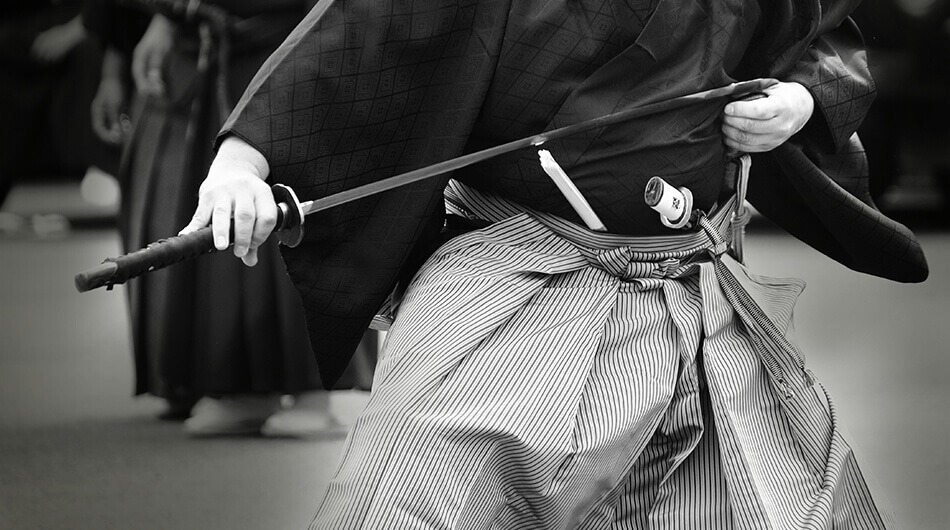
Long and short: the legendary weapons of the samurai
The samurai were the only population group in Japan allowed to carry two swords - the famous Long sword Katana and a short sword. There are numerous legends surrounding the former.
One of these is that the steel for the blade was folded 32,768 times. In fact, this was only done 15 times, but the blade consists of 32,768 superimposed layers.
The katana was also a means of expressing respect or mistrust. A samurai normally did not put the longsword down. Exceptions could be kneeling down to show respect or to sleep, but also to visit a friend or a higher-ranking person - but the sword always remained within reach.
When sitting opposite, the katana was placed on the floor to the right of the body (with the blade facing his own body) - a sign that the samurai had come with good intentions.
The short swords were mostly Wakizashiwhich were never put down. They also included two lances (yari and naginata) and a Dagger (Tanto) was also part of a samurai's weaponry. It is also interesting to note that until the 16th century, the Bow (Yumi) was the favoured weapon of a samurai - the sword was only used when necessary.
The legacy that survives: Today's significance of the samurai code
Even though the rank of samurai has been officially abolished, they are still important in Japanese society today.
The founder of the Mitsubishi-Group, for example, is a samurai, Honda was founded by a ronin - a masterless samurai.
Many fighting schools still come from this elite group.
The code of honour is still widespread today - especially in the employee culture. Today, unconditional loyalty applies to the company.
The Japanese intransigence in business life is also a legacy of the once so splendid samurai that still exists today.

